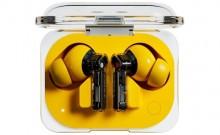![[Representational Image] India e-waste](https://data1.ibtimes.co.in/en/full/635433/india-e-waste.jpg?h=450&l=50&t=40)
Are you motivated to discard your old electronic gadgets the right way? You will be after knowing that a trove of precious metals like gold, copper and silver can be extracted from e-waste.
Electronic gadgets, such as computers, TVs and mobile phones, have a shorter upgrade cycle as compared to automobiles. The auto industry has a robust recycling method in place, where 95 percent of your old cars' materials are recycled into a wide range of things. But e-waste recycling is a broken system, where more than 85 percent isn't reprocessed, reveals metal supplying company Ryerson.
The broken, outdated or unusable electronics can be recycled, reused or resold. Due to the lack of awareness for e-waste recycling, we might be losing out on a lot more than we can see. Your old smartphones have precious metals like gold, copper and silver in minute quantities, but when recycled in bulk, it can turn a fortune.
Giving an example of smartphones, Ryerson revealed that 100,000 phones have 5.3 pounds of gold, 55 pounds of silver and 1,984 pounds of copper, all of which is worth up to $133,000. According to Environmental Protection Agency, 75 pounds of gold, 33 pounds of palladium, 35,000 pounds of copper, and 772 pounds of silver can be recovered from every one million cell phones. Instead, these metals end up in landfills or tainted water supplies.
"About 41.8 million metric tons of e-waste is shipped to developing countries every year, compounding the material issue with shipping and transportation costs. Ours is a culture of accelerating digitization, moving so quickly that perhaps we cannot keep up, so the problem is shipped elsewhere," Ryerson noted in its research.

In the U.S. alone, 9.4 million tons of e-waste is produced each year and at least $55 billion worth of valuable metals like gold, silver, copper and palladium could be recovered if the e-waste recycling was as effective as automotive recycling.
If we look at the automotive recycling industry, the US and Canada provide enough steel recycled from junk cars to produce roughly 13 million new vehicles per year. Nearly 15 million cars are junked each year and 95 percent of the materials used to build cars are effectively recycled.
For instance, the auto glass is recycled into concrete blocks, glass bottles, aluminium goes into aircraft, buildings, furniture and even as casings for iPhones and iPads, engines go on to be rebuilt, steel goes for new cars, buildings and bridges and things alike.
"By the standards of human history, electronics are still a new invention, so there is still hope that smarter ecological materials and effective methods to repurpose them will lead to a significant waste reduction of our technology. Until then, we can do our part to make environmentally-friendly choices when disposing of old technology. The lifespan of our devices may be only 2-7 years, but the impact on our global world is much longer and it's worth a second thought," Ryerson wrote.
E-waste befitting choice for fashion
The e-waste recycling system might be flawed, but independent corporations are doing their bid to make the most out of it. During CES 2018 in January, renowned PC maker Dell partnered with Nikki Reed's Bayou with Love fashion brand to sell jewellery made out of recycled gold from your old electronics.

Will other OEMs follow the suit? Hopefully, they do. Until then, let us dispose old gadgets in an environmentally-friendly manner.















